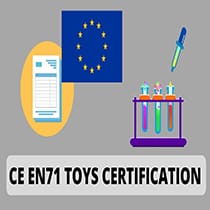
What are the toys safety stadards?
Toy manufacturers and retailers increasingly import toy products and parts from all over the world. To ensure they are safe for children to play with, the European Union introduced the EU Toy Safety Directive 2009/48/EC, which aims to establish minimum safety standards relating to toy features, flammability, substances, documentation and more.
The EU safety directive for toys requires manufacturers to certify their products with a CE mark, which demonstrates the toy complies with these standards. A CE toys mark is mandatory for selling in the EU, and producers must carry out tests and produce documentation to demonstrate they are compliant.
It is a legal requirement to ensure Toys and Dress up Costumes are tested to EN71 part 2, Flammability. This is called up within the Toy Directive 2009/48/EC. The EN71-2 regulation looks at a number of different factors that could lead to an injury to a child due to flammability. These include determining the presence of any flammable materials that are prohibited in children’s playthings, how long the item burns for and how quickly flames spread across it. Different types of items have different rates at which they are deemed to have passed.
Why does your country custom ask CE certification toys testing when you import toys?
Manufacturers exporting products to Europe should determine whether their products must be certified with a CE marking that indicates compliance with the European Union’s health, safety and regulatory requirements.
The CE marking, “Conformité Européenne,” is required for many products exported to Europe. The good news for exporters is that CE certification covers all of the European Economic Area (EEA), which includes 28 EU countries, as well as Iceland, Lichtenstein, and Norway.
“Often the CE marking is described as a trade passport because it enables the free movement of products within the European market,” says Han Zuyderwijk, a CE marking expert and president of The Alura Group, based in The Netherlands.
For American exporters, products that meet U.S. testing and certification requirements still have to be separately certified for compliance with EU standards. It also is important to remember that the CE marking is an indicator, but not proof, of a product’s compliance with European Union regulations. “If your product comes under the scope of a directive requiring CE marking, you must ensure the product complies with the applicable requirements, and affix the CE mark before placing it in the market in the EEA,” says Zuyderwijk.









